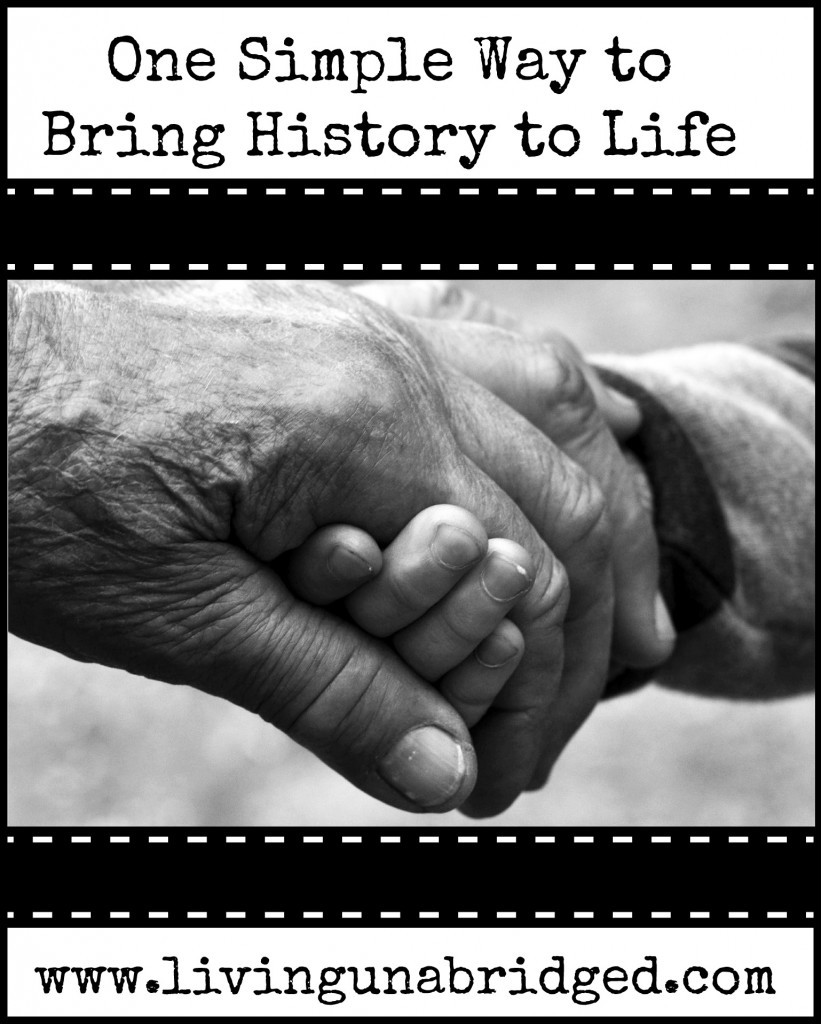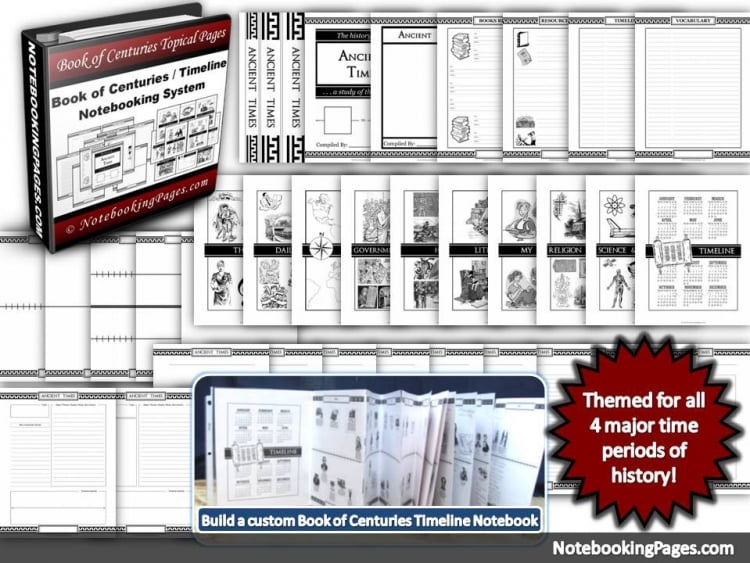It seems like homeschoolers really enjoy studying ancient times. A quick search on Pinterest will provide you with more activities and printables about Ancient Egypt or Rome than you could possibly finish in one lifetime.

Then we American homeschoolers have American History. This provides all kinds of opportunities like re-enactments or visits to Civil War battlefields, famous historic houses, or some truly fabulous museums.
But what if we're missing one dynamite tool in teaching history by focusing on the distant past? Not all "history" happened hundreds of years ago.
A Forgotten Resource for Teaching History
We all have a fabulous resource available: any older person we love or trust, like a grandparent, a great-grandparent, a neighbor or the nice older lady at church.
How to Bring History to Life
1. Give your children an assignment: interview an older person they know and would feel comfortable with.
2. Let your child know in advance what world events the older person might remember (The attack on Pearl Harbor and the Second World War, the Civil Rights campaigns in the 1960s, the first moon landing, etc.)
3. Have the child read something about this event first, or just have your child start by asking the adult, "What important events do you remember from when you were a kid?" (A little preparation is in order, especially for younger kids, unless you want your child to ask something like, "Did you fight in the Civil War?")
You could prepare a simple list of questions for kids to ask their grandparents (with permission). Questions like:
- What do you remember about [appropriate historical event]?
- What was your life like when you were a kid?
- How was your childhood different from mine?
- What did your parents tell you about when they were growing up?
Historical Perspective
Some adults have fabulous stories about the times their own parents or grandparents lived through. If you have a family member who's interested in genealogy, you might have your child ask about family lore (who fought where and in what war, who was a pioneer, how your branch of the family came to America, what life was like for a distant ancestor and how life has changed).
Studying Ellis Island will provide new perspective after you find out that an ancestor passed through there. The American Civil War will have more meaning if your children find out, as mine have, that family members fought on both sides of the conflict. Even a visit to a battlefield will be more poignant if they can imagine a family member fighting there.
In my family my kids are fortunate to have my mother as a genealogy expert on our family. And my father-in-law is the expert for his side of the family. My children have learned about connections to the Mayflower, most major U.S. wars or conflicts, pioneer life, and even some funny stories related to world events. (Like the fact that my dad's grandpa was convinced the moon landing was faked.)
If you keep a timeline or book of centuries, be sure to add your ancestor's pictures to the appropriate spots, or just make a notation at the pertinent events. (WW1 - Great-Great Grandfather fought in France).
Making history come alive through personal connections is not a new idea.
That's why you could hear an older generation ask, "Where were you when you found out President Kennedy was shot?" and why anyone in my generation can tell you where they were and what they were doing on 9/11/01.
Because really, History is about people. And when your children know and care about those people, History won't feel so far away.
Resources for Homeschoolers:










[…] —They need time with their parents and siblings. They need to play outside. They need to go to a zoo. They need to visit a farm (if they’re city kids) or the city (if they’re rural). They should visit an art museum or two. They need to see a great body of water. They need to get messy. They need to go swimming. They need to walk quietly on a nature trail. They need cuddling and tickling, joking and gentle teasing. They need to be around many different kinds, types and ages of people. They need grandparents or great-grandparents or an older family friend to spend time with. […]
[…] One Simple Way to Bring History to Life – Karen from Living Unabridged […]
[…] —They need time with their parents and siblings. They need to play outside. They need to go to a zoo. They need to visit a farm (if they’re city kids) or the city (if they’re rural). They should visit an art museum or two. They need to see a great body of water. They need to get messy. They need to go swimming. They need to walk quietly on a nature trail. They need cuddling and tickling, joking and gentle teasing. They need to be around many different kinds, types and ages of people. They need grandparents or great-grandparents or an older family friend to spend time with. […]
[…] —They need time with their parents and siblings. They need to play outside. They need to go to a zoo. They need to visit a farm (if they’re city kids) or the city (if they’re rural). They should visit an art museum or two. They need to see a great body of water. They need to get messy. They need to go swimming. They need to walk quietly on a nature trail. They need cuddling and tickling, joking and gentle teasing. They need to be around many different kinds, types and ages of people. They need grandparents or great-grandparents or an older family friend to spend time with. […]
I agree with everything!